Since musing on the question of mining subsidence and the cottage in Hall Lane, Walsall Wood last week, I’ve been bowled over by the interest readers have shown in this topic. It seems to fascinate you folks as much as it does me. I’ve been given information, sent diagrams, pored over maps and books. People have contributed memories, I’ve chatted in the pub and been out walking and studying an area I thought I knew, but clearly never looked at properly. This is going to be a long post. Get a beer, cup of tea or whatever takes your fancy, and make yourself comfortable. I try not to turn out epics like this, but I can’t work out a way of breaking this down into chunks without spending the next month writing. this post is going to be about maps, the way the land is and the history. There will be a later post about the Black Cock Bridge and canal itself within a day or so.
First of all, this isn’t about challenging anyone. It’s about exploration. Anyone is welcome to join in. The situation with this area and it’s topography is clearly very complex, with much information lost. It’s not wrong to question accepted tenets of history and I mean no offence. The engagement readers are showing in this is massive and I’m really, really excited by it. I thank you all.
In the book ‘Coal Mining in Walsall Wood, Brownhills and Aldridge’, written by Brian Rollins and published by Walsall Local History Centre (ISBN 0 946652 34 1), the author has the following to say:
A measure of the total mining subsidence as a result of the mining of coal between the Clayhanger and Vigo Faults can be gauged by the height of the canal embankment. When the canal was originally constructed it was built at or about original ground level. This is because the Wyrley and Essington is a contour canal, staying at one height in order to conserve the water that would be lost if there were locks.
As mining progressed and subsidence lowered the surface, the banks of the canal were raised to keep pace with it. In places the final height of the embankment is level with the bedroom windows of the nearby cottages, as can be seen in Hall Lane near the Blackcock Bridge.
In the immediate vicinity of Walsall Wood Colliery the canal is still at ground level. This is because this portion of canal is over the pillar of coal left to support the shafts and therefore suffered little or no subsidence.
I noted when I first read this some time ago, that Brian doesn’t comment on the legend of the sinking cottage. He references it in a sideways manner. He chooses his words carefully, and states his belief that the canal was once on or about ground level. While there’s evidence for subsidence in the area, I can’t find evidence – other than that the canal is elevated on an embankment – to confirm the degree asserted. I have, however, found many things that have surprised me.
Walsall Wood Colliery was first sunk in 1874, and began production about 4 years later. This map, dated 1884 by the Ordnance Survey, shows a colliery possibly in production.

1884 1:2,500 draft of the Bullings heath area. Sadly, there’s a correction tear in the image running below the ‘W’ of ‘Daw End Branch’. The cottage in question doesn’t appear to have been constructed, but Dairy Farm, over the road and a little to the south, has.
There are relatively few spot heights on this map, and it predated decent contours by 50 years. The height of the canal surface is 473 feet, taken as the standard mean height for this section. The surveyor – probably because he was on reasonably clear ground, ran measures at intervals along the towpath. These are in the region of 474-476 feet. It is unclear if there is any embankment to the canal at this point, but there’s something interesting at the junction of Hall Lane and Camden Street/Green Lane at the foot of the Black Cock Bridge. The road curves to the west, over what is now the Black Cock car park to form a triangle. This suggests to me that the junction as a straight tee – like it is now – was on a hill even then, and a farmer from Dairy Farm, possibly with a cartload of milk, wouldn’t want to drag his horse and load up it unnecessarily. The cottage itself doesn’t seem to have been built yet, or if it has, the surveyors didn’t notice it.
By the next draft in 1902, it’s still unclear if there’s an embankment or not, but it’s a clearer map. Note that Camden Street is then called ‘Bullings Heath’.

1902 1:2,500 draft of the Bullings heath area. A much cleaner, clearer plot. Our cottage still isn’t there. Something is, but I’m not sure what, and it certainly isn’t the cottage. The spot-heights have been resurveyed, and seem a little at variance, but the benchmark appears to have moved from the canal bank to towpath edge. Note the increase in houses.
By 1919, Walsall Wood, and by extension, Bullings Heath, are growing economic communities.

1919 1:2,500 draft of the Bullings heath area. First appearance of Camden Street. Embankment now marked, cottages appear both sides of the road. Whether the embankment formed, or was always there, the house seems to appear after it. Diagonally across the Black Cock Bridge, on it’s northeast side, there’s interesting stuff going on there. I’ll come back to that later.
For those who by now imagine the mapping evidence to be clear, look at the 1938 version of this map. The embankments disappear again. Mind you, so does the railway.

1919 1:2,500 draft of the Bullings heath area. Walsall Wood is a strong, well developed mining community, an economic force to be reckoned with. Note a new Black Cock pub has been built. Still odd things going on to the northeast of the Black Cock Bridge. Note that the railway cutting and embankment detail is largely absent. Odd.
On the subject of the mapping record, Andy Dennis sent me the following fantastic analysis:
Hello Bob
Here is a profile of the land in the Hall Lane area. The overall shape around Grange Farm, between Hall Lane and Pelsall is similar to the OS 1st ed (though it has no detailed height information). Hall Lane is about where you would expect. Modern maps give spot heights for canal (north of Black cock Bridge) 144.6m and Hall Lane 136.7m a difference of 7.9m.
Some subsidence affecting properties in Hall Lane is far from unlikely, but it appears the myth is exaggerating it somewhat.Andy

Nice work by Andy Dennis. Andy has a background in this kind of work and I thank him most profusely for his wonderful contribution.
Andy also had this to say in a subsequent email:
By the way, my mother told me about the legendary subsidence, rebuilding the canal and the precipitous Black cock Bridge and some of her relatives had lived beneath the embankment in Lindon Road (where the back gardens of the 2 semis are now). Assuming the smoke did have a fire, presumably, there was some serious damage to the canal (this could simply have been a problem with the embankment itself), but the various fishermens’ tales blew it up out of all proportion.
Inspired by Andy’s map plotting, I had a play with some three-dimensional mapping simulation software (Memory Map) and the latest Ordnance Survey 1:25,000 mapping to get a feel of how the area is today.

This shows the way the land profile looks without any man-made structures, as surveyed by the Ordnance Survey. The vertical scale is hugely exaggerated (about 6x) to show the profile. Note that the canal is largely flat, and where it is not, there are embankments. Note the fall away from Shire Oak that continues through the canal at Hall Lane as Andy identified.
As you can see, the mapped record is extensive, but not conclusive. If there was a period of heavy subsidence, it looks very much like the cottages in Hall Lane were built after it happened. I have other reasons for believing them to be built at a lower level than the canal, whether or not the subsidence occurred. They are as follows.

Looking up Hall Lane toward the Black Cock Bridge. I think this hill was always here. The cottages are on the right.
- The cottages were built facing each other. They have always done so, across the level of Hall Lane, whatever that may have been. They aren’t far enough apart to accommodate a huge shift in level between them.
- Dairy Farm and it’s barn are possibly the oldest buildings in the immediate area. The barn, farmhouse and cottages in question are braced, but seem square. Contrast that with some of the houses elsewhere in Walsall Wood. Again, they are too close together to have been separated by any height.
- There’s a retaining wall behind the cottages which looks to be at least as old as the homes themselves, running up to about first floor level/top of door height. I’d take a picture but it seems intrusive to do so.
- The cottages have both normal house numbers, and canal numbers. The canal numbers, 239 & 240 are on the front, facing the road. There are others like this in Lindon Road, Brownhills, which I believe are 225 and 226. These were clearly built as the dwellings of canal workers.
- If they had therefore been built at canal level, they’d probably have been built facing the canal with the numbers and front doors facing it, with towpath access from the bridge and canal, like the canal cottages at Park Hall in Walsall.

Dairy Farm and it’s barn are possibly the oldest buildings in the immediate area. They are braced against susidence, but still seem square.
The other thing that makes me think the major subsidence – to whatever degree – may have come before the cottages is that of all the local old buildings in the immediate vicinity, the only ones with anti subsidence or bracer bars are the canal cottages, the farm and it’s barn. Brian Rollins in the above book, as Stymaster remembers, makes the following statement.
Properties still exist with tie rods round them, these being placed at bedroom floor level. This is called rodding at the chamber joist. It is sometimes believed that these rods were put in after the property was damaged to hold it together. In fact, they were usually put in by the colliery company when the property was expected to be damaged, this helped to curb the damage and lower the level of compensation.
There’s an interesting link with the canal workers. [Howmuch?], a real Walsall Wood man unlike myself, a Brownhillian upstart, remembers the Mole family living in the cottages when he was a lad in the 1960’s. By some twist of genius, he found the following image on the Blackcountryhistory site.

The chap bending to shovel, lower left, is Alf Mole, who lived at the cottage with his family in the sixties when Howmuch remembers he worked for the canal board. This image is taken at Catshill Junction. Note the bridge, Warreners Arms in the background, and possibly the start of the first new housing. Is that possibly stables on the far side of the canal? The hut with the bike leaning against it is – I think – the old tonnage house, where the boat weights were recorded at the narrows. I don’t know who the other chaps are, and check out the young lad just behind Alf.
We believe descendents of the Mole family still live locally. If you’re reading this, please shout up.
Facebook reader David Edwards, another longtime contributor, had this to say, which I think could be related. [Howmuch?] seems to remember Alf’s son being called Ian:
Interesting this Bob, I have emailed the wife of my friend’s brother his names (Ian) that lived in the Black Cock cottage as a child. Hes now in his late 50’s I’d guess. Here’s the reply: ‘Hey Dave were not sure whether Ian’s parents were the first occupants, but it did stand level with the canal years ago. Ian says he can remember walking out of the door straight onto the canal side when he was a kid so it has subsided quite a lot.’.
I’m hoping to see Ian soon Bob, he lives very local, so ill find out more.
Now, I swore I wasn’t going to do this, but this post is now rocking up at about 2200 words, and I still haven’t looked at the Black Cock Bridge itself. I’m going to do that in a subsequent post, because I’ve been studying it, and it has some really good pointers.
Please stay tuned, all of your contributions have been mega. I’ve loved reading every one. This isn’t over yet.



 RSS - Posts
RSS - Posts
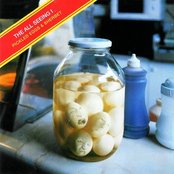
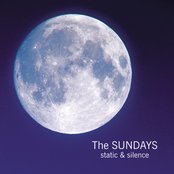

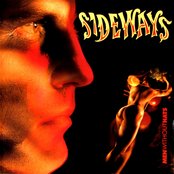

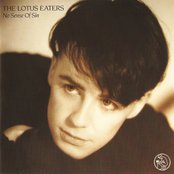

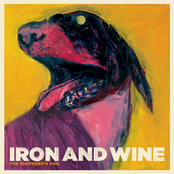


Fascinating reading……………………………. loving it!!!
You are correct, Cottage 239 was Alf Moles house who is also my grandad. Most of the Mole family are still within the local area.
Alf had 4 sons & 4 daughters and all but one stil live local.
Alf Mole was my uncle. I now live in Australia.
My Aunty Dos Mole used to look after me in the school holidays and I played with Ian and Yvonne Mole while staying with them at holiday time.
My name is Bob Seal.
Dos Mole was formally a Woodhouse. My Mum was Edna Woodhouse.
Thanks for sharing all this information about the Walsall Wood area.
Bob my Mom is Pat Mole im sure you remember her…I have heard my mom talk of you…I remember your Mom.
Hello Tracy, Yes, I remember your mom very well. I enjoyed my childhood playing in Coppice Woods and going on trips to Blackpool organised by the Black Cock Pub I think!
I feel very lucky to have family that worked on the canals. My dad was a lock-keeper until he had a bad accident coming home from work one night. He got knocked off his motorbike by an articulated truck and damaged his spine. I remember Uncle Alf painting the Black Cock Bridge from his work narrowboat. Love the smell of the paint and messing around the boat. Say hello to your mum for me.
HELLO BOB ARE YOU THE LAD THAT WAS IN MY CLASS THROUGH SCHOOL DAYS , [Robert seal] if so I remember you were very good at art did you make a career out of it 😕 JOHN BARLOW.
Wow- you’ve excelled yourself with this- lots of research and thought, and not a small amount of map geekery. There’s been some cracking contributions from others too- please keep it up.
I’d not noticed Brian Rollins’ wording before: but you’re right: he doesn’t actually state the cottage itself has sunk: merely that the ground had.
I also think the statement
(my emphasis) says it all. It’s saying that the canal may have had some embankments or cuttings when built. I think that the fact of the canal being a contour canal, following the height of the land, has become exaggerated over the years, and that has contributed to the myth of the sinking house. After all, the canal would have to route around some structures, even in 1796ish.
Interestingly, despite all the fuss, at no point does anything anyone has said here contradict Brian’s words- he is, after all, hugely experienced- it’s just people’s memories or interpretation of his words (including my own recollection of them) that are in question. Time to re-read his book….
By the way, if anyone wants to see what happens to old cottages when things subside, take a walk along Norton Green Lane, Norton Canes.
Fabulous work Bob
To find some answers you should see about contacting the residence of the first cottage. In the 50s and 60s it was the Mole family, (this family go back a long way in this area) maybe they were living there a long time previous to the 50s. My brother Robert dated the girl there and I dated her pal. We used to walk along the cut, very posh.
As kids we would push off on our bikes at the top of the bridge towards coppy woods and see how far we could go without touching the peddles.
Hi Brian,
The Mole family no longer live in the first cottage. The cottages were sold off and are now rented out. At one time it was owned by a man in Green Lane, who I think had the extention built onto the side but it has since been sold on.
I think the current owner of the house, did live for a while in the row of terrace houses opposite. The family living there now have only been there for a year or two so probably wouldn’t know anything.
Hi Brian Im the grandaughter of Alf Mole i have posted some comments lower down the page but out of curiosity just wanted to know which one of the mole girls your brother robert went out with?
Regards
Tracy
Loving this, more questions than answers so far though, like a good episode of Mid Somer murders at the half hour mark. Looking forward to the next post.
I have heard from a reliable source that although the cottages have suffered some subsidence over the years,and slipped down they were never, ever, level with the canal in the first place.They were always lower.
I noted on the 1884 map that there is a black square marking where the mortuary was but it isn’t named until on the later maps.
Don’t know when the Hall Lane cottages were built but my house isn’t marked on the 1902 map and yet it was built prior to then so they could also have been built but omitted from the map.
I notice on the maps that there are cottages along the canal between the Blackcock Bridge and Clayhanger and next to the canal in Camden Street, does anyone know what happened to these?
Pingback: Filthy business « BrownhillsBob's Brownhills Blog
Pingback: Page not found « BrownhillsBob's Brownhills Blog
Hi Bob
The house in question was my Grandparents house my Mom was born there in in 1945 as were all of her brother’s and sisters, there was 8 of them in total, my grandparents definately lived in the house pre World War 2 untill my Nan’s death in 1986. The house adjoining it was my Grandads parents house. I have spoken to my Mom and she told me in her life time the house has never been level with the canal, but i think my Nan had told her that they used to be level, until the banks were built up. The the small plot of land in Camden Street next to where the pump stations is used to have two houses, the one belonged to my Mom’s great Grandma and the other belonged to Coopers Coal Merchant.
I also remember that in the late 70′s early 80′s my Nan and other people were protesting about the bridge being in a dangerous condition, me and lots of other little children sat on the bridge stopping cars going over, I`m sure it was in the local newspapers but i was only young. I think that was the reason for the green foot bridge.
I have also been told that you were trying to find out if my Nan’s house had a cellar? It did not, if you want me to ask my Mom any more questions please feel free and i will do my best to help.
Kindest Regards
Tracy McDowell
Hi Tracy
Sorry for the delay in replying. As I explained in other replies, time has been tough this week.
Your contributions have been wonderful (as have everyones) and if I may, I’d like to contact you by email at some point in the future to see if we can get a post together. As soon as you mentioned it, I remembered the protest. It’ll be interesting to see if we can pull that out of the archives.
I was interested in the cellar, as if the house had fallen, if it were built directly on bedrock, that may have acted as a ‘raft’ and prevented it from collapsing. With no cellar, that’s more likely to be the case.
I’m quite captivated by the houses in the sump. I get the feeling there history to be explored there. [Howmuch?] is interested in the wharf the other side of the canal. This *so* isn’t over. Not by a long way.
Anyone remember the huge pile of mud there in the eighties, dumped on the farm side of the embankment from dredging the canal? It stank!
Cheers again, and thanks to all
Bob
Hi Bob
Sorry for the delay in getting back to you, I have been away on holiday in Italy and have just returned. You are more than welcome to contact me anytime. I was so pleased you remembered the protest it will be very intresting if you can pull the newspaper from the archives I am sure that I`m on the picture if you can get hold of it. As you know my Grandfather worked for the canal board and so did my Great Uncle who still lives in the second cottage he is my Nans brother he used to live in the first cottage I think he was born there. My Father worked for british waterways untill his recent retirement and my brother still works for them, in and around that area he has told me some intresting things about the bridge, if you contact me I can put you intouch with him.
Best regards
Tracy
Can i say it was lovely to see my grandad Alf Mole in the picture and can i ask Brian Ansell which sister his brother Robert went out with ?
This is a long time coming. I had returned to this article for a re-read and came across your request. My Brothers name was Robert (Sailor) Edwards and of course me being Brian. Robert I believe may have been a friend of someone within your family and that is how he met Yvonne. Robert and Yvonne became friends and dated each other but Yvonne wished to bring along a friend whose name I cannot recall at this moment so it turned out to be a double date. There was not much money about in those days so a date usually amounted to a walk or to be very posh a trip to the Arboretum. I remember sitting in your Grandmothers house and meeting all of Yvonnes family. Roberts greatest friend was a guy by the name of Harold Mole who lives in Shelfield, possibly a relative of yours. The reason I use the past tense of was, is that Robert died just a couple of years back. If you wish for more information Tracy or even a photograph you may contact me at sailorsidi@gmail.com.
A friend thinks that the cottages were built about 110-111 years ago. Someone called ‘Twist’ built the row of terrace houses opposite first and then the two cottages afterwards which were later sold to the Waterways.
Interesting!
I remember some called Lil Twist who lived in those cottages. She came over to Aunty Dos moles house for lunch while I was there in school holidays.
Hi. Just catching up on these posts. My grandad was Percy Twist. I believe he may have built the cottages. He also lived in a house in Hall Lane where my mom and her 3 sisters lived growing up his wife was Dorothy. He was in a building partnership with a ‘George’ somebody…cant recall his surname now… .. unfortunately my mom passed last year and would have loved reading all about this and would have contributed im sure. Lil Twist may have been my grandads mom.
Pingback: Reader Caz: what a star! « BrownhillsBob's Brownhills Blog
Pingback: A Fold on the map « BrownhillsBob's Brownhills Blog
I used to drink in the black cock with Alf and his son Richard and many other lovely people ‘I still miss them and their stories of old’ when Ray Holland was the landlord. Rich and Alf were good pigeon flyers from the Black Cock pub as was Ron Green of (Breakaway fame). Now It was always said that the Moles house had sunk (subsided) and asking Rich about this he said it has always been in its present position as far as he remembers and as he says, “can you imagine a house sinking that far down and suffer no ill structure damage” (makes sense to me) All of hall lane is lower yet we don’t hear of that street sinking .Over the other side of the black cock bridge there is an open fenced orchard on the left and in there there is a tall leaky wall that goes up to the canal level and it looks pretty old and well substantial. I often wonder why that was there there. To be honest I don’t think it will ever get sorted and i like the stories as to subsidence.I hope some of the old fellas are still around they was a hive of history and dam good company .Thanks Bob. people like you keep our minds alive and our memories not be forgot. Keeping my eye on here from now on. Good health all
Hi Frank
What a lovely story about you with my grandad and uncle rich I used to love my grandad singing when he was at the black cock and playing his mouth organ how I wish my children could have experienced what i did when I was young.
Kindest Regards
Tracy
Hi Frank
Thanks for your kid words, glad you like the blog. Tons of stuff here if you’re interested in the area.
You may be interested in the followup to this post which talks about the bridge, canal and sump you mention.
http://brownhillsbob.com/2011/07/16/the-rise-and-fall/
…in which I study the bridge, the canal and the retaining walls.
Glad to have a new reader on board, anything you’d like covered, just ask.
Best wishes
Bob
Thank you for the comment Tracey.I spent many a happy hour with the flyers there and sat with Rich and Alf in the garden waiting for his winner (lol). they was all good company and a pleasure to know. Was you a user of the Black Cock pub. as I canot recall your name. thanks again and keep safe
Hi Frank my mom is Pat, Alf’s daughter and Richards older sister. I did use to go to The Black Cock when I was young, but only used to have a bottle of vimto with a paper straw lol !
I used to love the hot nut’s from the machine, also as children my brother and I always went on the Black Cock’s daytrips. I am 42 now, unfortunately my grandparents had both died when I was 16 so after that I did not get go at all, shame !
All the best
Tracy
The dreaded hot nut hut and a vimto and you can remember that lol . I’m 64 but keep it a secret please. The last day trip i did was to the lock pub at worcester/ish on the cut lock and Nellie singin her head off playing the piano. Great trips they was to. I saw Ann a while ago, glad to see her settled with kids of her own down Hall lane. I’m still in the wood but i don’t see any of the old school now shame. Most the shop owners are now gone only mad Trevor the barber left, hey its all booze , beauty and undetakers now, you can get drunk have a haircut and get buiried all within 50 yards now in the Walsall wood. I Still i like the place and some nice walking t/c Tracey
Well nice one Bob. Just being here brings things back i forgot. Those maps are brilliant and the pictures, i’ve climb that hill to the bridge many a day and fell down it comming back lol . Is the Mr Evans the chip van owner or family i do remember a Evans with a van full of amazing birds of prey in the Black Cock , i wonde rif they are the same person or family, thanks again. Frank
Pingback: Made from girders « BrownhillsBob's Brownhills Blog
Pingback: A solid brick foundation | BrownhillsBob's Brownhills Blog
Pingback: The scent of jasmine | BrownhillsBob's Brownhills Blog
Pingback: By George, he’s got it! | BrownhillsBob's Brownhills Blog
Pingback: On the way back home | BrownhillsBob's Brownhills Blog
Pingback: Old Ground | BrownhillsBob's Brownhills Blog
Pingback: Sunk island | BrownhillsBob's Brownhills Blog
Pingback: Fighting a losing battle | BrownhillsBob's Brownhills Blog
Pingback: We’ve made a name for ourselves | BrownhillsBob's Brownhills Blog
Pingback: Milking it | BrownhillsBob's Brownhills Blog
Pingback: Cattle class | BrownhillsBob's Brownhills Blog
Pingback: Doctor Fell | BrownhillsBob's Brownhills Blog
Amazing to find all of the comments and info here. I am a woodhouse Dos (Mole) was my dad’s sister..and they were born in 178 hall Lane..they were brought up by their granny as the mom died and the dad legged it to brown hills ( with a woman called Thurza who was told was a witch..but please don’t say anything). I remember hours in the working men’s club …I can still play a good hand of cribbage or fives and threes…but was very upset to hear billies pet sheep had snuffed it ( Billy lived in a caravan at the back of the WMC and had a dalmation that smoked park drive and drank mild from an.ash tray). Any way…my dad Joe worked the colliery boats from aged 13 to ? When he had to do national service, and the bloke he worked the boats with was named Amos ( well Errrmos being the correct pronunciation)….I met Amos a few times ..an amazing man, always had three jobs….watchman at the Vigo when he was old…and it was him I will have you know as pinched an outside table from the Black Cock one winter as ” it is mek a good pig bench”.
Amos Jackaman lived in cottage just before Black Cock bridge in Camden street . When we married we lived in New estate just off Camden street . Barns close that was . Knew Mrs Jeffries there and Sally James . Have loved reading about my adopted home . I previously grew up in Rushall . My father in law live in castle rd and my mom and dad’s friends lived in one of houses demolished in Fort Crescent . A fascinating read .
What is a pig bench? Is it for salting the pig?
Pingback: Can you identify this mystery cottage? | BrownhillsBob's Brownhills Blog